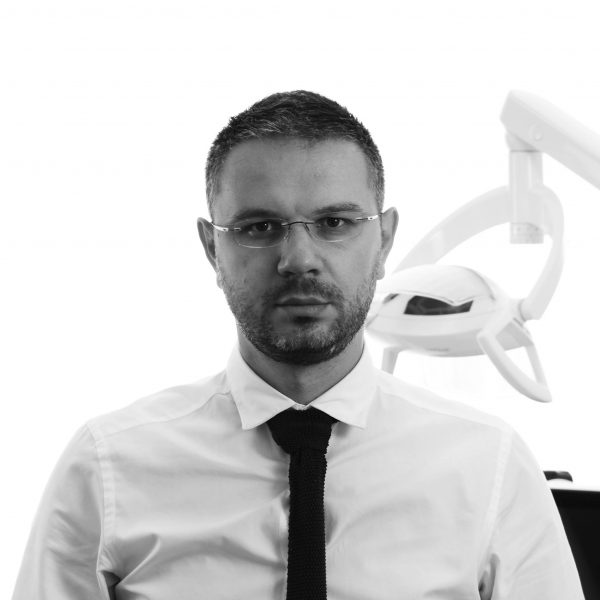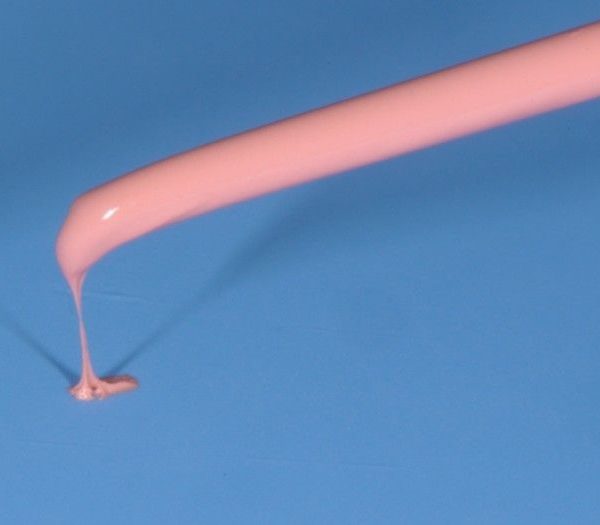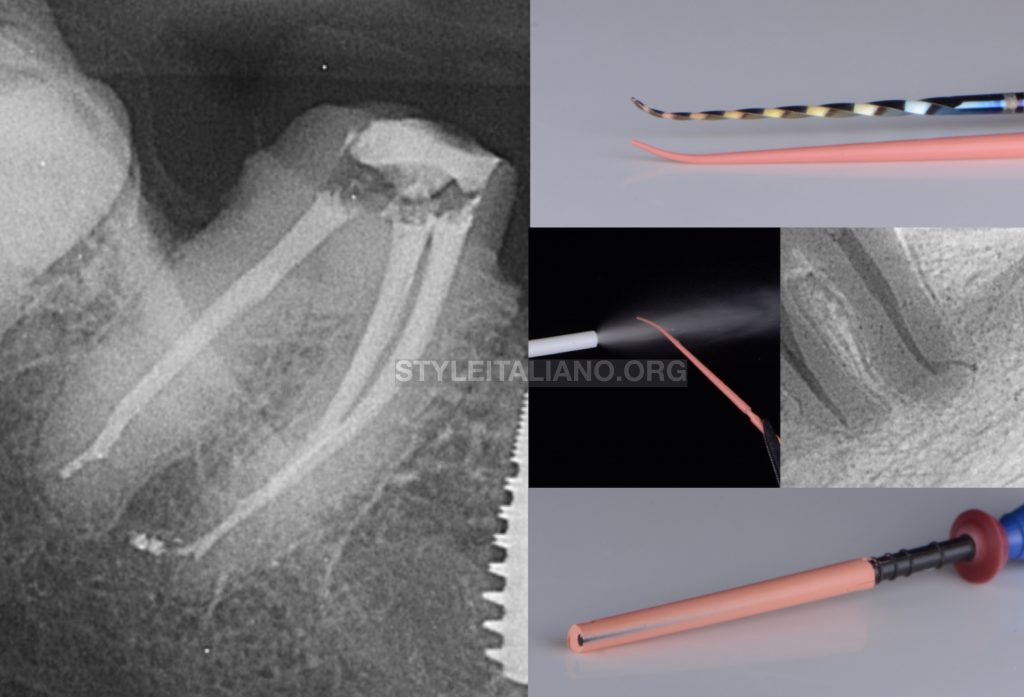
Obturation of root canals with impediments
28/07/2020
Ivan Mirovic
Warning: Undefined variable $post in /var/www/vhosts/styleitaliano-endodontics.org/endodontics.styleitaliano.org/wp-content/plugins/oxygen/component-framework/components/classes/code-block.class.php(133) : eval()'d code on line 2
Warning: Attempt to read property "ID" on null in /var/www/vhosts/styleitaliano-endodontics.org/endodontics.styleitaliano.org/wp-content/plugins/oxygen/component-framework/components/classes/code-block.class.php(133) : eval()'d code on line 2
Impediments (obstructions, obstacles) could be of anatomic (Figure 1) or iatrogenic (Figure 2) origin. Obturation of root canals with impediments potentially presents significant challenge for clinician and different approaches are often necessary in order to achieve successful outcome.
If the straight master gutta-percha point won’t fit to length the first choice is to precurve gutta-percha point in an attempt to bypass the impediment. Gutta-percha point should be precurved the same way we precurved hand and rotary instruments during negotiation and shaping procedures (Figure 3). In this retreatment case of tooth #47 (Figure 4) referring dentist could not negotiate the mesial canals. Although negotiation and shaping were challenging the most difficult part of treatment was obturation. Gutta-percha points were precurved and sprayed using endo ice (Figure 5) which allowed successful bypass of impediment (Figure 6). Sometimes cone fit could be time consuming but it is the most predictable way of filling in those cases.
If we can not bypass the impediment with precurved gutta-percha points it is a perfect indication for carrier based obturation. This lower second molar primary treatment case presented significant impediments in both mesial and distal canal systems (Figure 7). After finishing shaping I wasn’t able to fit cones to length so I decided to use thermafil in this specific case. A modified technique was used in order to accelerate apical movement of filling material (Figure 8,9). I did not remove excess sealer before inserting a carrier, like I usually do, and I placed a carrier to length in 1-2 seconds, instead of 4-5 seconds. In that way I was able to push gutta-percha and sealer ahead of the carrier achieving a satisfying result (Figure 10,11).

Fig. 1
Cases with anatomic root canal impediments (abrupt curvatures) in distal canals of lower molars.
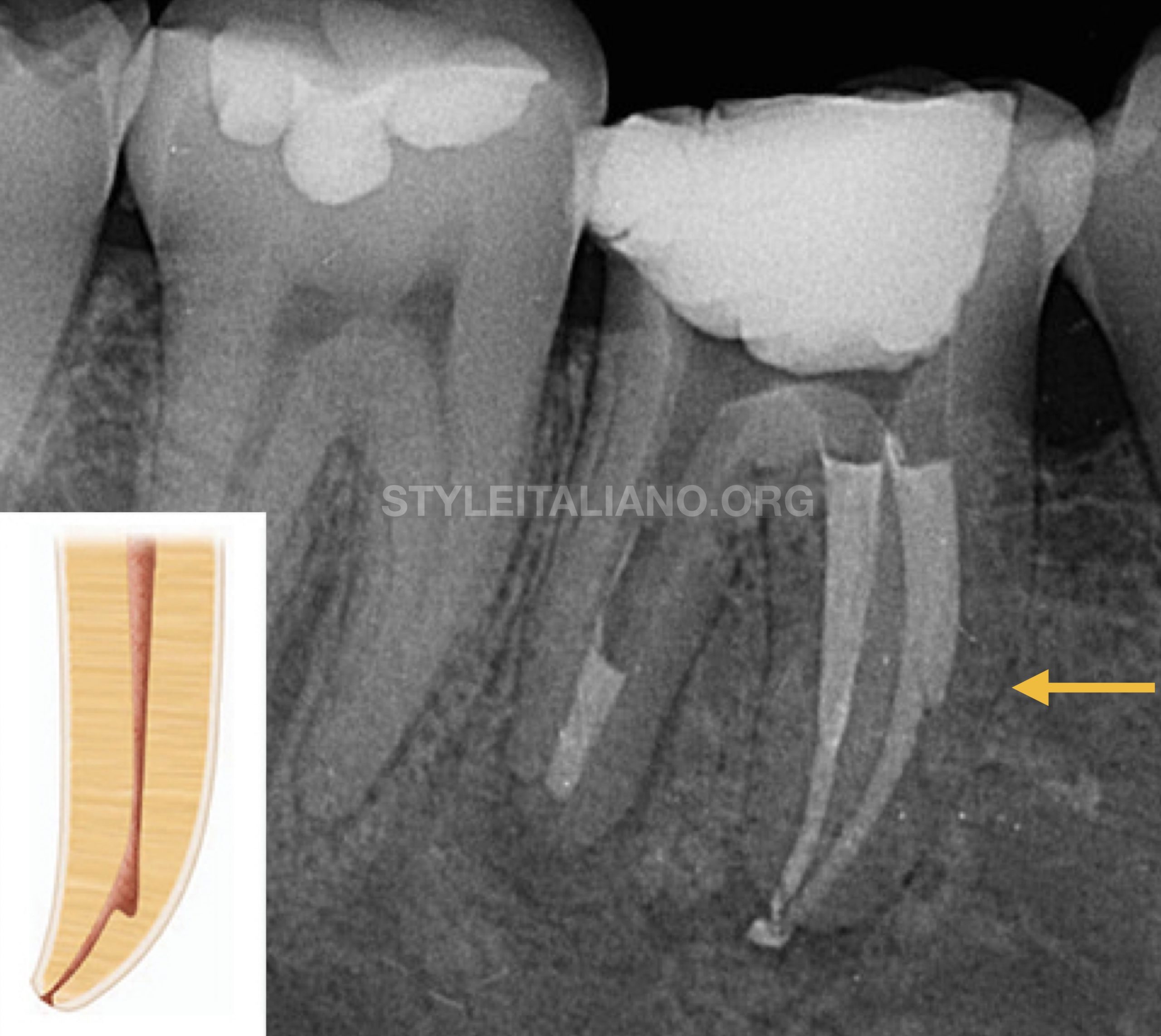
Fig. 2
Iatrogenic impediment - ledged mesial canals of lower molar with significant ledge in mesiolingual canal (arrow).
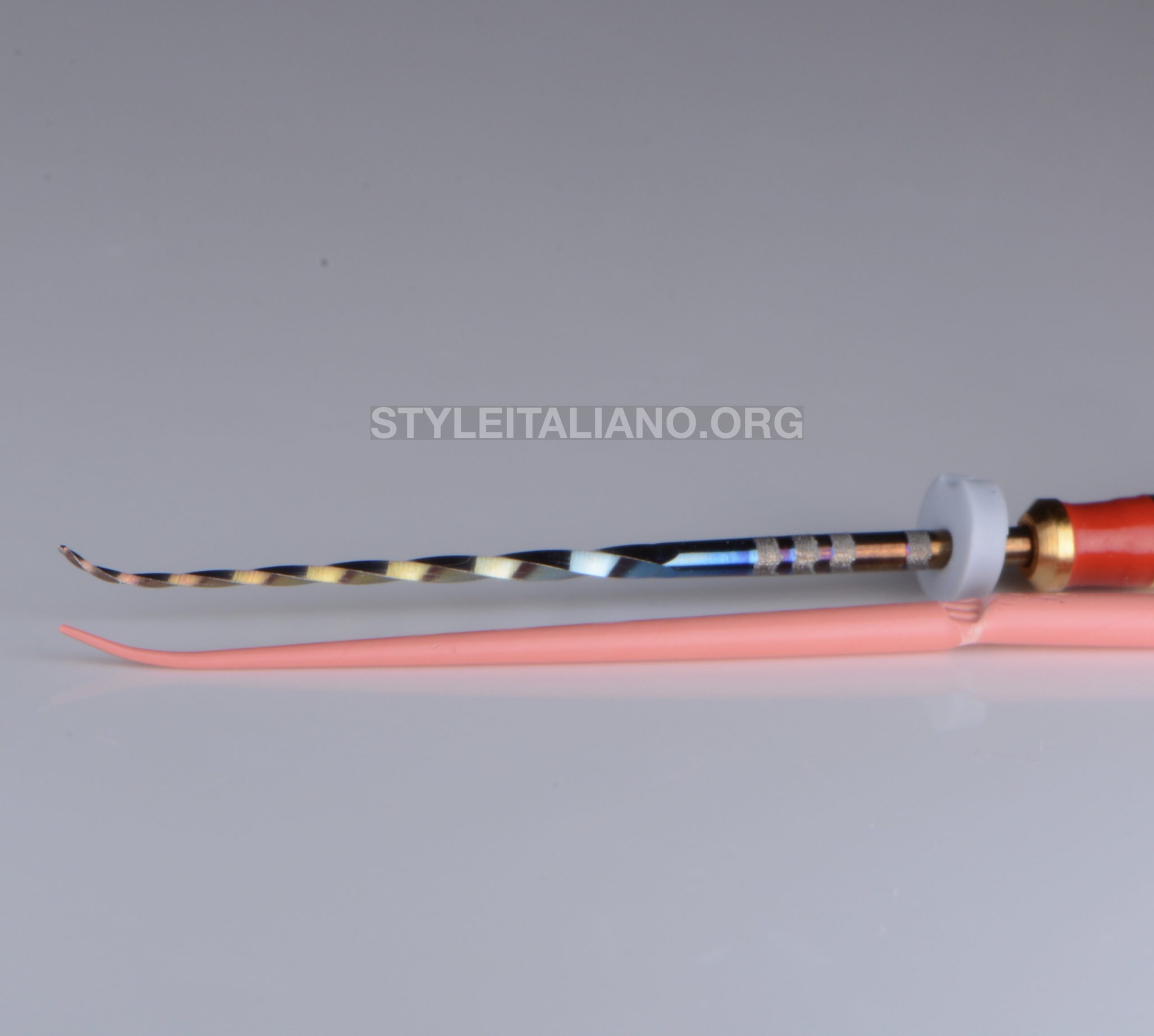
Fig. 3
Gutta-percha and rotary file precurved in the same direction.
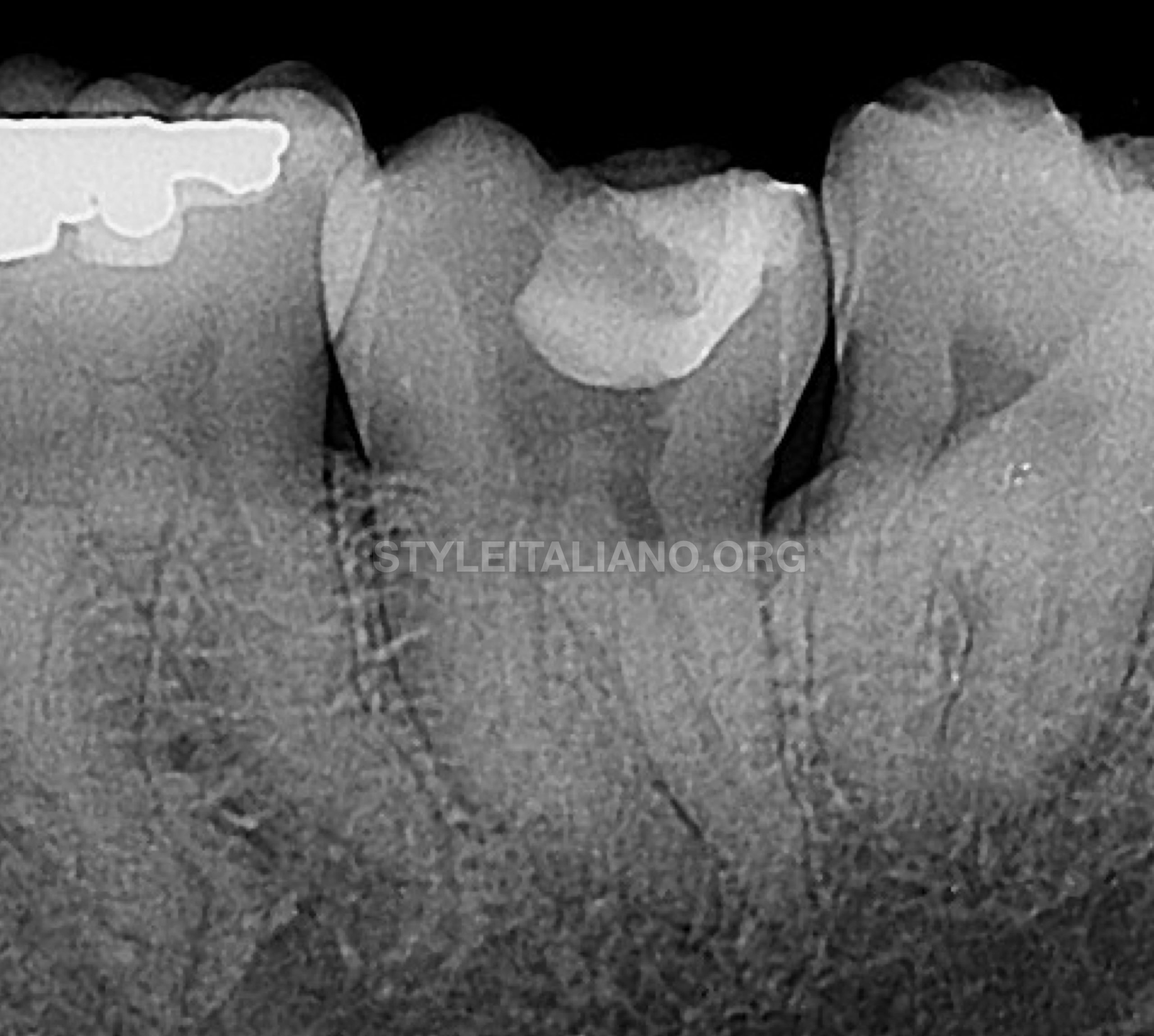
Fig. 4
Pre-operative radiograph tooth #47.
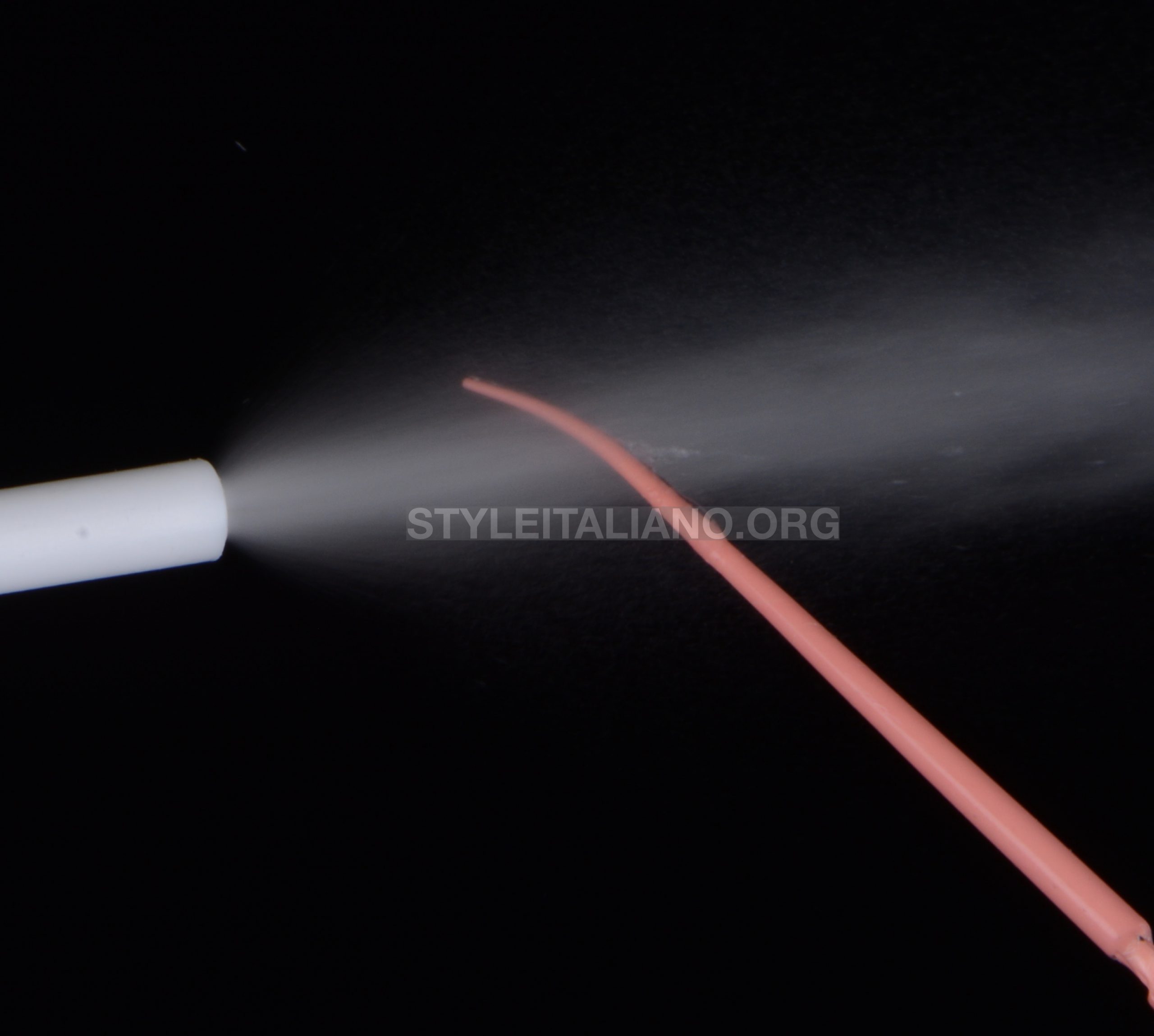
Fig. 5
Endo ice spray is of great help in making gutta-percha points stiffer.
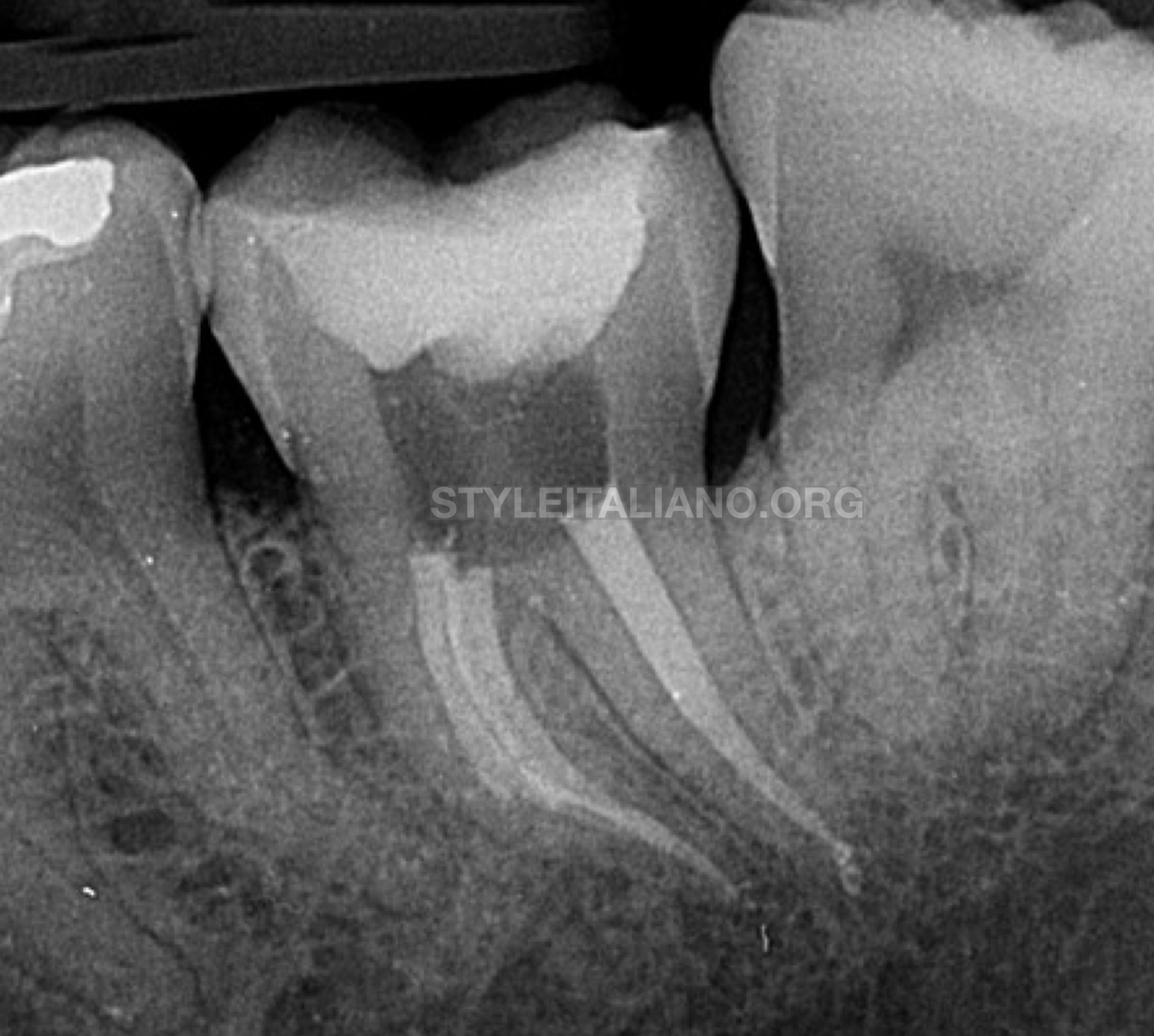
Fig. 6
Post-operative radiograph demonstrating significant ledge in mesial canals.

Fig. 7
Cone-fit radiograph. Gutta-percha points stopping at the impediment level short of working length.

Fig. 8
Thermafil technique in regular cases. Excess gutta-percha at the tip of the carrier is removed to minimize the risk of overfilling. The tip of the plastic carrier should be visible.
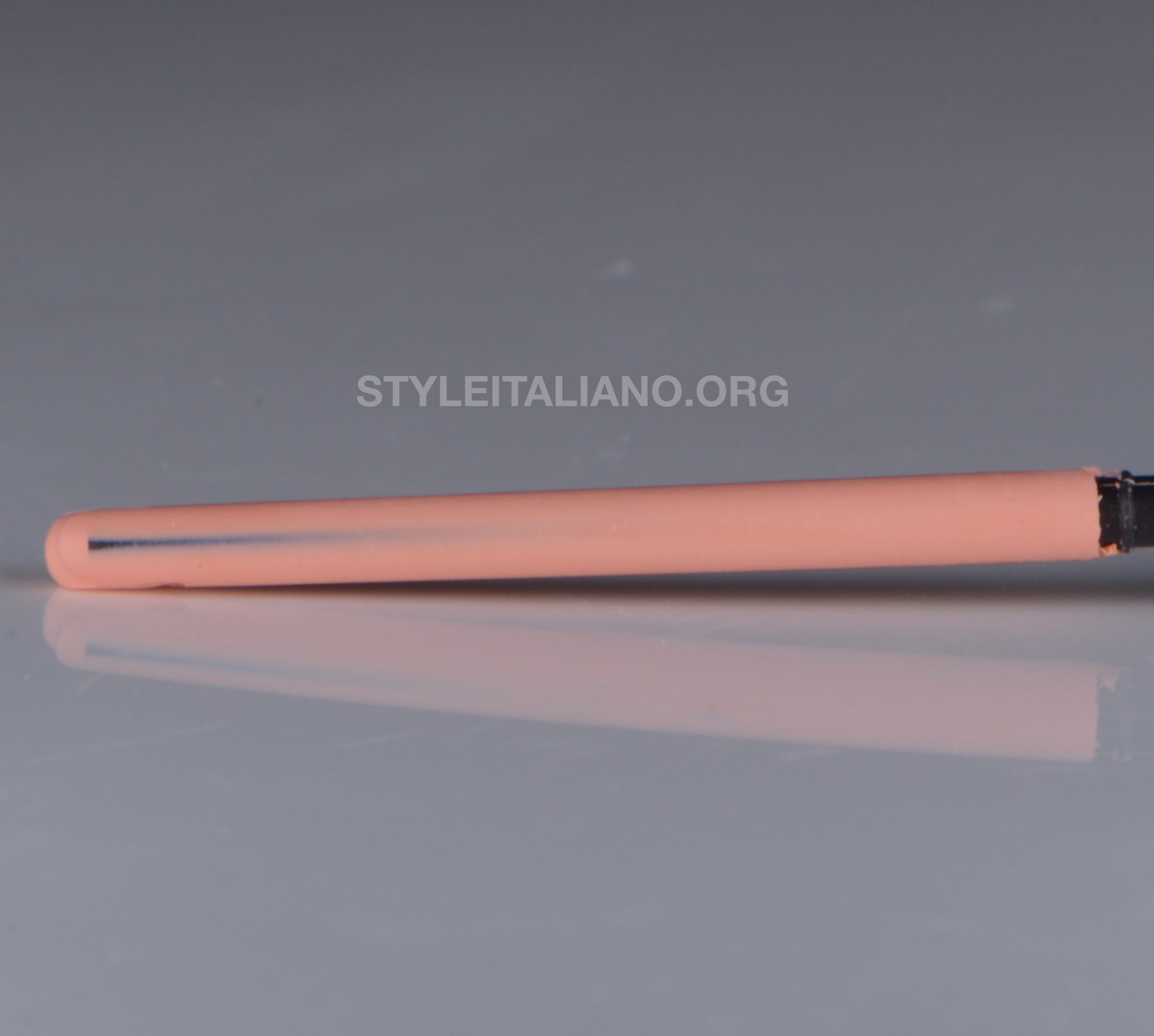
Fig. 9
Modified thermafil technique. Gutta-percha at the tip of the carrier is not removed.
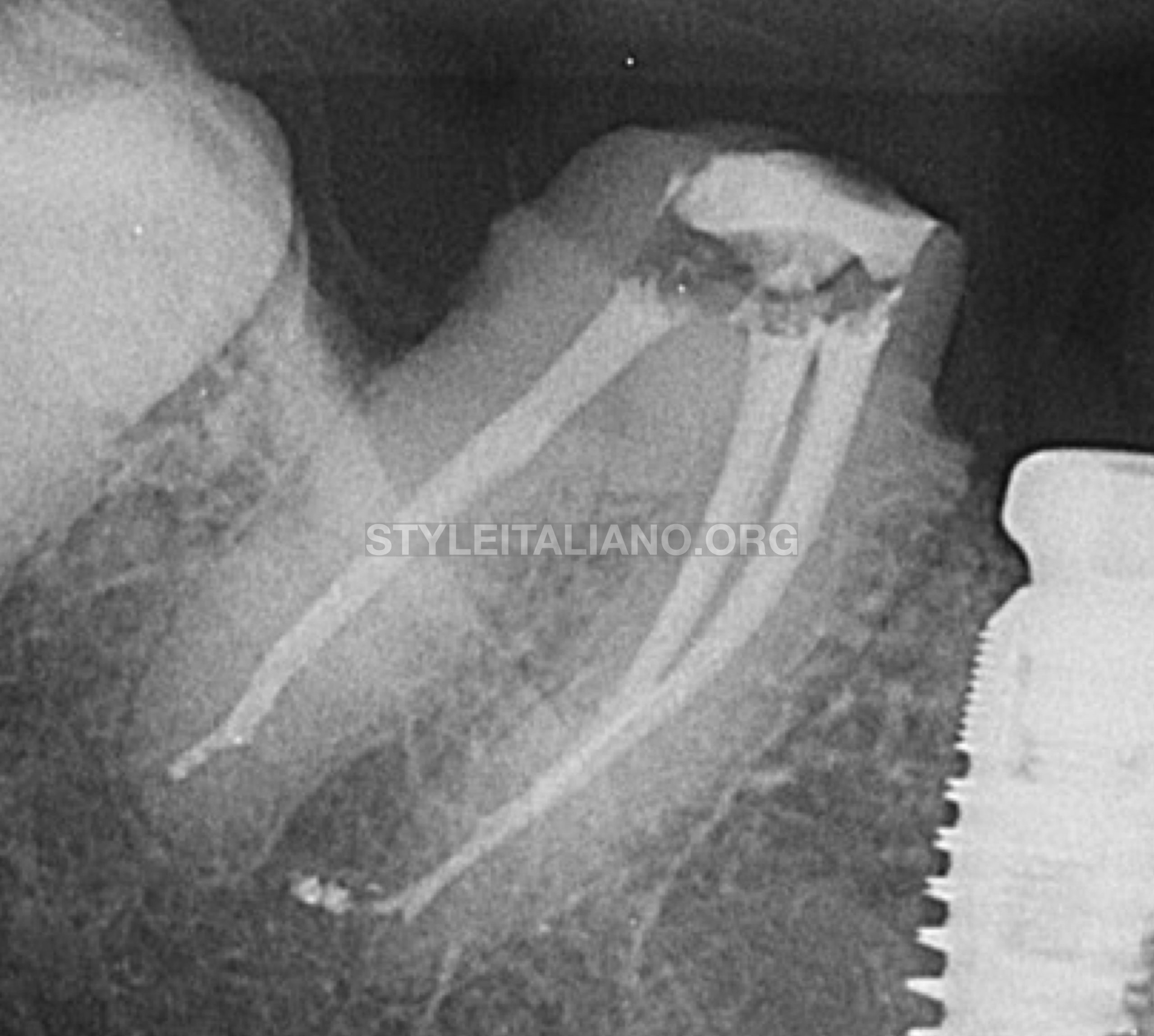
Fig. 10
Post-operative radiograph. Carriers stopped at the impediment level but gutta-percha and sealer were pushed 2-3mm ahead.

Fig. 11
Post-operative radiograph, different angulation.
Conclusions
Endodontics clinicians should be familiar with different obturation techniques and their modification in order to achieve predictable outcomes and successfully solve a variety of everyday cases.
Bibliography
- Roda RS, Gettleman BH: Nonsurgical retreatment. In: Hargreaves KM, Cohen S, editors. Cohen’s pathways of the pulp, ed 10. New York: Elsevier; 2011.
- Cantatore G, Johnson B: The thermafil system. In: Castellucci A, editor. Endodontics, Vol. II. Florence: Tridente S.r.l; 2006.
- Buchanan LS: Managing severe canal curvatures and apical impediments: an endodontic case study, Dent Today; 2005.


